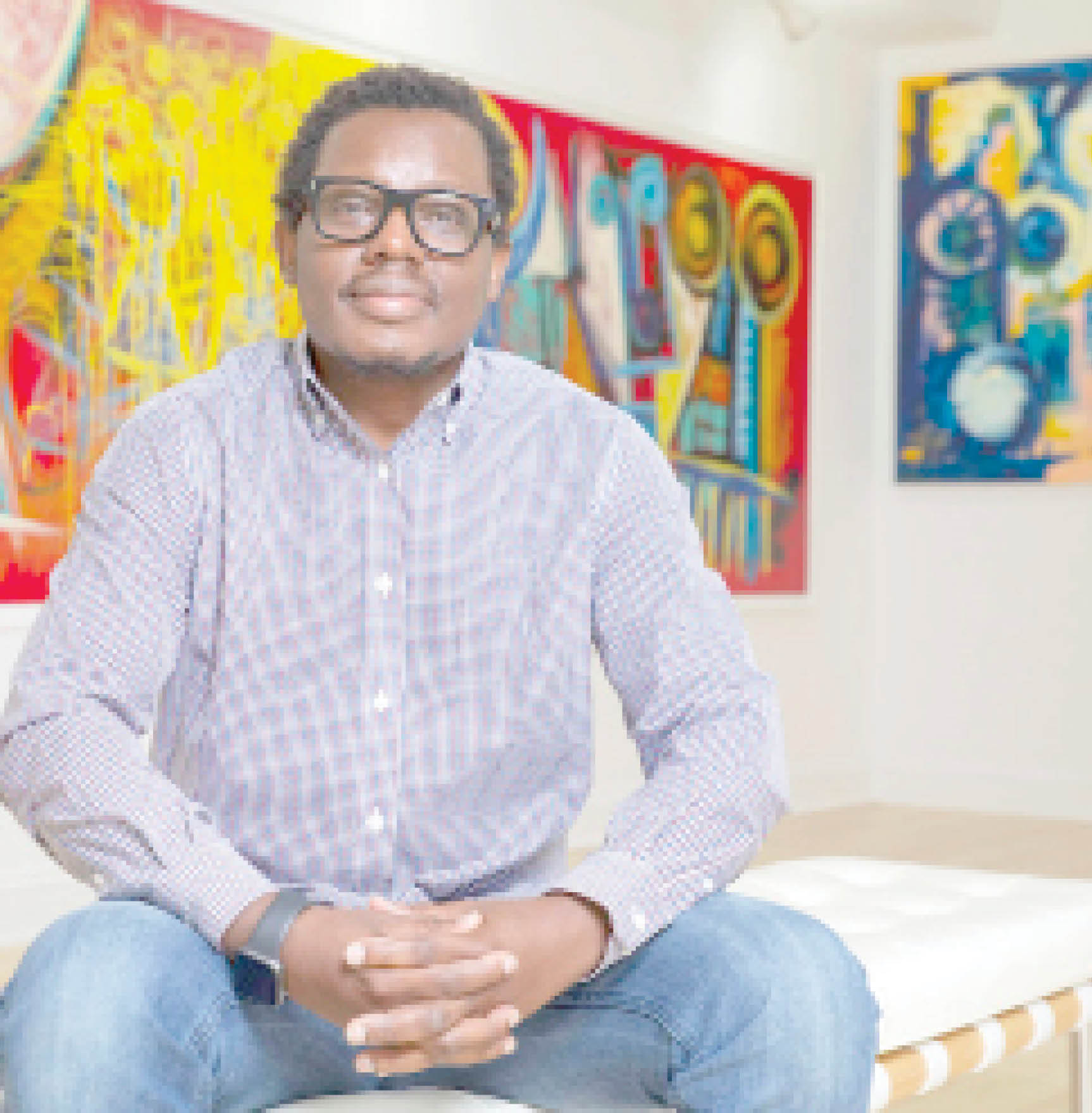A Nigerian artist and art collector, Olusanya Ojikutu, has amassed the sort of collection an art lover’s dreams are made of. At his home in Bowie, Maryland, works by a score of artists—many of them established and emerging talents from Africa and the African diaspora—fill every available surface with pieces by El Anatsui, David C. Driskell, Sam Gilliam, Yinka Shonibare, Basil Watson, and Carrie Mae Weems. In addition, there are sculptures more than a century old and works that tell the stories of specific African histories that also inspire Ojikutu’s own work as an artist. He spoke on how he got into collection in the first place, how he likes to display his art and where he finds it.
What was your first purchase; and how much did you pay for it?
My first acquisition was not exactly a purchase, it was more of a barter. I remember that back in the art school, I used to trade paintings with classmates. Beyond college, there are two pieces that come to mind: a painting by Merton D. Simpson, who is an American abstract expressionist painter, African art collector and dealer. And the other was a beautiful acrylic-on-board piece by an incredibly talented artist friend, Dapo Ojo-Ade. I subsequently added an irresistible piece by Victor Ehikhamenor.
The collection, which has evolved significantly over time, is a combination of classical, modern and contemporary African art and art of the Diaspora. It has developed from a simple assemblage to a thoroughly researched, well-organised collection consisting of compelling, in-depth narratives of Africa’s cultural heritage and its long tradition of innate creativity, extraordinary talent and artistic achievement.
- Senate gets ultimatum to probe ‘contract scam’ in NPC
- Obi of Onitsha: A phone call stopped me from boarding attacked Abuja-Kaduna train
What was your most recent purchase?
I acquired three pieces simultaneously: a phenomenal mixed-media work by Sam Gilliam, a beautiful hybrid mask (K’peliye’e) by Yinka Shonibare and an elegant and powerfully evocative Mumuye ancestor figure from Nigeria, formerly in the Neiman Marcus Collection.
Which works or artists are you hoping to add to your collection?
I would love a piece by Dimeji Onafuwa, who is an amazing emerging artist to watch. I will be thrilled to collect one or more of his allegorical, figurative paintings rooted in his Yoruba heritage. I love his use of bold colours, which create a luminous quality of melancholy beauty. I also have many other incredibly talented contemporary artists of colour – most of whom are women – on my radar, for this year or sometime next. They include Victor Ekpuk, Meron Engida, Jadé Fadojutimi, Monica Ikegwu, Wole Lagunju, and Jamilla Okubo, as well as Sungi Mlengeya and Marcellina Akpojotor, who are both making their debut in the Solo Positions sector at this year’s Art Basel Miami Beach.
What is the most expensive work of art that you own?
That’s a difficult one, and kind of subjective. I would rather look at it through the lens of its intrinsic value than price. For me, the true value of art is a very personal thing, as an emotional and aesthetic response to a particular work that also takes into account its cultural relevance. I believe the most valuable work is primarily the art that offers satisfaction, pleasure and brings tranquility and context to our homes. I would say one of the most valuable pieces we have in the collection is a charismatic portrait bust of the late US Representative John Lewis, a towering figure of the civil rights era. It was sculpted and cast by Basil Watson, an internationally renowned Jamaican-born, Georgia-based artist. This remarkable sculpture is truly a window into my mind as an artist and connection to the American ideal of the “self-evident truth” of human equality and aspirations.

Where do you buy art most frequently?
It can run the entire gamut. My wife, Yinka and I buy from art auctions, galleries, online, directly from artists, studio visits and art fairs.
Is there a work you regret purchasing?
None. I really cannot think of any. Maybe because I am an artist as well, I believe beauty resides in everything. It is such an unconventional prism through which I view almost every piece and the entire collection. For example, I love the combination of classic, modern and contemporary African art in our home. I am convinced that these objects are connected by a common invisible cultural thread and history.
What work do you have hanging above your sofa and bathroom?
My colossal 90-by-90-inch acrylic octaptych hangs above our sofa, flanked by a captivating Romare Bearden water colour painting on the left wall and a mysteriously recondite Carrie Mae Weems on the adjacent wall. They create a perfect asymmetrical visual balance. An early work on cloth by El Anatsui and a painting by David C. Driskell hang in our dining area nearby. Some other fascinating pieces across from the dining area include original works by Beauford Delaney, Lamidi Olonade Fakeye, Loïs Mailou Jones, Bruce Onabrakpeya and Hale Woodruff.
There are two pieces of artwork in our bathroom: a 1940 silver bas-relief by Béla Vörös, originally from a Parisian private collection, and an acrylic piece on canvas by Twins Seven Seven.
What is the most impractical work of art you own?
A rare double-sided 1948 oil on canvas painting by Herman Rose, titled Man at the Piano on one side, and Still Life with Child’s Toys on the other. We can only view one side at a time. It was previously held in the esteemed collection of Joseph H. Hirshhorn and the Hirshhorn National Museum of Modern Art in Washington, D.C for more than 50 years. Rose was included in the famous 1952 exhibition at the Museum of Modern Art entitled “15 Americans,” alongside works by Jackson Pollock, Clyfford Still, and Mark Rothko.
What work do you wish you had bought when you had the chance?
There are several of them. A recent example is a classical African piece – a Baule heddle pulley from Cote d’Ivoire, formerly in the Helena Rubinstein Collection. I liked that particular piece so much, but I got a little complacent, and before I knew it, someone else had snagged it. I subsequently stumbled upon and promptly acquired a similar piece.
If you could steal one work of art without getting caught, what would it be?
I am not sure I would be comfortable with the word “stealing.” However, I have a powerful desire for the 13th-century cast-copper Seated Tada Figure found in Tada village, northeast of Ile-Ife, Nigeria. As an artist myself, this remarkable Tada figure speaks deeply to me, alongside other classical African art treasures. They spark my imagination tremendously and inspire and influence my work.
Culled from artnet.com

 Join Daily Trust WhatsApp Community For Quick Access To News and Happenings Around You.
Join Daily Trust WhatsApp Community For Quick Access To News and Happenings Around You.


